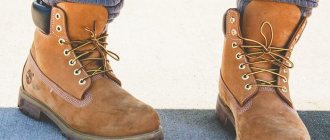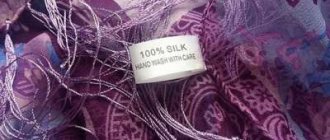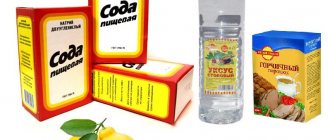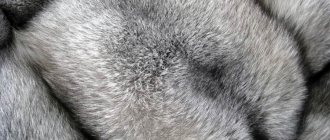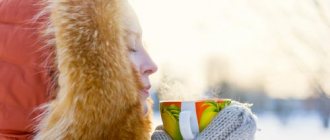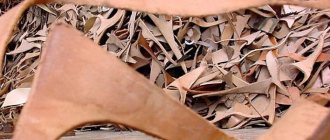In cold weather, cozy, fashionable fur adorns our clothes - they are used to trim coat collars, hoods, hats and even shoes. Some people prefer completely fur outfits - fur coats, coats, vests.
The material differs in color, texture, cost and many other characteristics, but there are only two main types. And the question in this regard is eternal: how to distinguish natural fur from artificial fur. It is important to have an answer to this in order to correctly determine how to care for an item and fairly evaluate fur products when selling or buying. Also, knowing the “topic” will protect you from scammers and protect you from losing money.
After reading our article and looking at the photo, you will easily find out which fur is natural or synthetic, and will avoid many problems.
How to distinguish natural fur from artificial fur: what is the difficulty?
Thanks to modern technologies, manufacturers are able to imitate natural fur so well that many buyers don’t even know about it. For example, today you can see artificial products that are made under:
- raccoon;
- doodle;
- silver fox;
- arctic fox;
- hare;
- mink;
- ermine, etc.
When deciding to make such a purchase, you need to pay attention to many factors that can give off faux fur.
First of all, you need to know how products are made from real and synthetic materials. Natural fur is the tanned skin of an animal along with wool. Synthetic consists of a base and artificial or natural bristles.
In most cases, such fur is made by knitting knitted fabric and adding tufts of wool from combed tape to it. To maintain the strength of the hairs, the fabric is glued to a thin film that is easy to feel. Today, many manufacturers use animal wool and artificial base. The density of the pile in this case is very high, which indicates unnaturalness. The processed flesh does not have such density, because before cutting it is greatly stretched in order to save money.
This is interesting: faux fur first appeared in 1929, but it was made using natural wool - alpaca. It was only in the 50s of the 20th century that this material was created completely synthetic.
Another difficulty when choosing is that dishonest traders can sell products made from real, but cheap material. A chinchilla rabbit is often mistaken for a nutria, because they are very similar. Therefore, you should always buy fur products only in branded stores or salons that have been operating for more than one year. Also, at the time of purchase, the seller must provide a warranty card for a period of one calendar year. During this time, the buyer can exchange the product or get their money back.
Signs of a high-quality tanned skin
In order to check the quality of a fur coat as thoroughly as possible, you need to know the stages of processing the skin. Its finishing will be ideal only if the work takes place in a production workshop.
Industrially tanned skins undergo numerous technological processes:
- Dried specimens are soaked in a special solution, and after some time they begin to clean the core. How well this process went can be shown by the smell emanating from the fur coat. If the skins are not properly cleaned of fat and muscle fibers, the skins become rotten and smell bad.
- Degreasing is the next step, designed to remove fatty fibers from the flesh. If this is not done, the skin will rattle when shaken.
- The tanning process gives the product strength. When properly tanned, the skin becomes elastic. After this, it will be able to easily restore its shape with any mechanical action.
- When the tannins penetrate into the layers of the dermis, the skin is dried and treated with a fat emulsion, which will allow the dermis to retain the remaining moisture inside the cells.
- After this, the skins are dried, kneaded well using special rollers and separated into varieties. Low-grade skins are dyed.
Technological process of fur processing
When examining a fur coat, the dyed skin can always be distinguished from the original color. The flesh of a fur coat sewn from high quality natural pieces should be white or slightly yellowish. The yellower the skin color, the older the fur, and the less the coat will be worn. Dyed skins are revealed by the color of the skin. It has the same shade as the fur. Finished skins may have defects:
- hair loss;
- scabs;
- yellow hair;
- exposure and destruction of hair roots;
- keratinization of skin tissue;
- rotting due to violation of processing technology.
Poor quality fur may fall out.
All the shortcomings of poor workmanship will appear during use of the finished product. The smell of raw leather indicates the beginning of decomposition of the flesh. This occurs due to a violation of processing technology, which leads to rapid cell destruction. For this reason, the layers of the skin become very thin and lose their elasticity.
What should you pay attention to?
When choosing a fur product, you first need to study the label. In most cases it is on the wrong side. The tag must indicate the materials used for manufacturing, composition, serial number, country of origin, manufacturer's address and other contacts. All inscriptions must be legible. Sometimes the label also includes care instructions.
In addition, products made from natural fur are in most cases branded, and therefore, when you see the brand name, you can safely search for information about the manufacturer on the Internet.
We should not forget that real fur cannot be cheap, because the production of such products requires high costs. Therefore, the low cost of a mink coat or boots with sheepskin should alert the buyer.
Also, when deciding to purchase a natural product, you should pay attention to its weight. Animal wool will always be slightly lighter than synthetic material. It is also necessary to take into account the presence of odor - there should not be any.
You should not believe sellers who say that the product has been sitting for a long time and therefore lint is falling out of it. Natural hairs should not fall out. Otherwise, we can talk about the fur being synthetic or that the animal could have various diseases.
Looking at the back of the product, you will notice that there are stamps on the skin, usually purple, and pieces of leather are sewn with small seams.
Important: some types of modern synthetic furs can also have a high cost, which is associated with high production costs.
Where to buy
If you want to purchase a fur coat, vest, or hat made of natural fur, we recommend making purchases in trusted places. Currently, there are enough chain stores that value their reputation and can provide all the necessary certificates. The chances of running into a fake in this case are minimal. The label contains all the information about the product, so be sure to take a look at it. In any case, the main differences between faux fur and natural fur, little tricks and recommendations will never be superfluous.
How to check in different ways
There are several ways to quickly distinguish natural fur from synthetic fur.
How to determine by touch
Natural wool always feels smooth and soft to the touch. If you run your hand over it, the villi will quickly return to their previous position. You can squeeze the product in your palm and then release it. Natural flesh will instantly return to its previous position, as it has a high degree of elasticity.
You can also notice that this fur is a little itchy. If you run your hand over it, the fibers will pass through your fingers, as if you were petting a cat. It is worth paying attention to the undercoat - it should be quite thick and soft. In addition, the natural material is always a little cool to the touch, and has a beautiful shine when exposed to sunlight.
Don’t forget that the fur of different animals feels different to the touch. Mink hair is quite hard, while beaver hair is very fluffy. The silver fox can be recognized by the presence of three different colors on each hair. And its skin is soft and warm to the touch.
Fire test
Another way to check the naturalness of fur is to set it on fire. This must be done carefully by pulling out a few fibers and bringing the fire to them. When real animal fur is burned, an unpleasant smell of burnt hair will be felt. In this case, the material will burn, leaving behind only ash.
Synthetics will begin to melt, and as a result will turn into a ball of plastic. The process produces a very unpleasant chemical odor. The complexity of this method is that not every seller will allow this experiment. Therefore, you can determine the quality by fire only after purchase.
Pierce with a pin
A pin or needle is another simple method for determining whether the fur you are looking at is real. Use the tip of the tool to carefully pierce the product. In the case of animal skin, the needle will be very difficult to enter, but the artificial fabric base can be pierced quite easily. You also need to pay attention to the hole that remains after the experiment. If you pull the skin in different directions, it should not increase.
Basics test
You can verify its naturalness by carefully examining the base and spreading the hairs apart. In the case of faux fur, it is always fabric, stretchy, you can see threads on it, and this immediately catches your eye. Natural products are distinguished by a smooth leather base. It is also worth paying attention to its color. A high-quality real animal skin will be white or very light, but if it is colored, then most likely it has been dyed.
Important: high-quality fur does not require painting. Often, manufacturers dye and cut it in order to hide any defects.
As you can see, you can always check whether the fur in front of you is natural or artificial. But every year it becomes more and more difficult to distinguish them. Modern technologies allow manufacturers to imitate natural materials as efficiently as possible, which causes many difficulties when choosing a product. In order to correctly identify all the differences and purchase a truly high-quality fur coat or sheepskin coat made of natural fur, you need to be very careful and use all the above recommendations.
Label
Particular attention must be paid to the label and the information contained on it. If you don’t know how to distinguish faux fur from natural fur, at least read what the manufacturer indicated. All information about the composition of the fur, its origin must be indicated, the features of using the product, as well as the subtleties of caring for them must be reflected. The absence of a label should be a red flag. In 2010, a document was adopted in the Russian Federation obliging manufacturers of fur products to provide complete and reliable information about the materials used.
What to wear with winter leather boots?
With a short, wide-cut fur coat with a flared skirt, women's boots with fur, high, with a zipper, or ankle boots with a fur trim are suitable.
With a leather jacket, which has fur trim at the cuffs, trousers made of coarse material with a simple type of model are usually worn. An ankle boot with short fur without zippers or fasteners on the side, but with lacing at the front, would be suitable for this selection of clothes.
